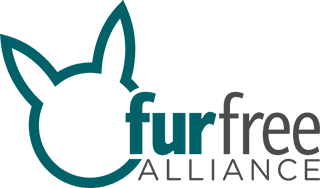There are many ecological problems and risks inherent in raising and killing animals on a large scale for consumer purposes. Contrary to what the industry claims, fur farms are seldom small-scale family-run facilities, but increasingly intensive factory farming systems with high energy consumption.

Climate impact

Carbon footprint
Producing feed for the millions of animals kept for fur comes with a severe ecological footprint. In a 2007 edition of Animal Issues, the Animal Protection Institute estimates that:
“It takes about 3 tonnes of feed to produce a single mink coat, and a tonne of feed (2,200 pounds) to produce one fox fur coat.”
In 2011 the MTT Agrifood Research Finland published a life cycle assessment (LCA) of mink and fox pelts, commissioned by the Finnish Fur Breeders’ Association, which concludes:
“The carbon footprint of a mink skin is almost equal to the daily footprint of an average Finnish consumer, and the footprint of a fox skin is approximately three days’ worth. The footprints of fur alternatives are much smaller.”
Quantifying the environmental impact of the mink fur production chain ‘from feed to fur’, a LCA study conducted by CE Delft, states:
“The climate change impact of 1 kg fur is at least 5 times higher than the highest scoring textile (wool) – due to the production of animal feed and manure emissions.”
The fur industry claims its use of food industry waste for animal feed and farm waste for biofuel is highly sustainable. However, it would be much more sustainable to turn food waste directly into biofuel.

Energy consumption
Energy is consumed at every stage of fur production. This is in addition to the energy costs of transporting the animal pelts and finished fur garments literally around the globe, throughout all the stages of the fur industry—beginning with transporting feed to fur farms or trappers setting and checking their traplines, then shipping the animal pelts to international auctions and on to dressers, dyers, manufacturers, wholesalers, retailers and finally to the consumer.
The consumption of energy for animal fur apparel does not end once the fur coat has been purchased by a consumer. To keep fur from drying out or oxidizing, the Fur Information Council of America urges fur owners to “Always store your fur garments in cold storage when you are done wearing them for the season or not using them”.
Recent
More facts
Natural mink fur and faux fur products, an environmental comparison (2013)
A study by independent research institute CE Delft, commissioned by Bont voor Dieren, GAIA and LAV.
Environmental Impact of Mink Farm Production (2011)
A study by independent research institute CE Delft, commissioned by Bont voor Dieren, GAIA and LAV.
Life cycle assessment of mink and fox pelt produced in Finland (2011)
LCA study by MTT Agrifood Research Finland, commissioned by the Finnish Fur Breeders’ Association (FIFA).
Cruelty is Not Green (2007)
A report by The Association for the Protection of Fur-Bearing Animals.




